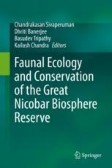Search
Search Results
-
The Paleoneurology of Early Reptiles
Reptiles represent the most speciose group of living tetrapods. They occupy a variety of niches and display a wide range of locomotory modes, both...
-
Developmental anomalies in ‘reptiles’: a sco** review
Developmental anomalies affect all species. However, the amount of data varies greatly among taxa and focuses mainly on domestic or model species,...

-
Reptiles as Environmental Sentinels: Exploring Their Significance
This chapter examines the crucial role of reptiles as environmental indicators, highlighting their importance in influencing current methods of...
-
Reptiles as Paleoenvironmental Proxies and Their Association with the Climate
Reptiles are animals that depend on external environmental conditions to regulate their body temperature. The temperature is a key factor for the...
-
Amphibians and Reptiles
Amphibians and reptiles are a diverse group of ectothermic vertebrates that occupy a variety of habitats in rangelands of North America, from...
-
Virulence determinants and antibiotic resistance in staphylococci isolated from the skin of captive bred reptiles
Knowledge of the composition and properties of skin microbiota in healthy reptiles is essential for preservation strategies and thus the prevention...
-
Factors affecting overwintering retreat-site selection in reptiles in an agricultural landscape
ContextUnderstanding what characteristics influence retreat-site selection by fauna is critical for both habitat management and species conservation....

-
Terrestrial Reptiles and Amphibians of the United Arab Emirates
Among the diverse habitats of the United Arab Emirates (UAE), 60 terrestrial reptiles and 2 amphibian species have been recorded, of which 1 is...
-
Does the expensive brain hypothesis apply to amphibians and reptiles?
Vertebrate brains show extensive variation in relative size. The expensive brain hypothesis argues that one important source of this variation is...

-
Reptiles of Great Nicobar Biosphere Reserve
The present description is the outcome of the Great Nicobar Biosphere Reserve (GNBR) expedition carried out by the Zoological Survey of India during...
-
Spatiotypological Structure and Organization of Communities of Amphibians and Reptiles on the Cis-Altai Plain
AbstractSpatial changes in the population density and species diversity of amphibians and reptiles are described on the basis of material collected...

-
Marine Reptiles of the United Arab Emirates
Within the waters of the United Arab Emirates (UAE), there are nine sea snake species and five species of sea turtles, two of which (Hawksbill and...
-
Amphibians and Reptiles of Mexico: Diversity and Conservation
The amphibian clade in Mexico consists of 411 species: 250 frogs, 158 salamanders, and 3 caecilians. Reptiles are composed of 1073 species: 58...
-
Distribution of amphibians and reptiles in agricultural landscape across Europe
ContextEvaluating herpetofauna presence and the species-specific and species richness patterns in response to agricultural landscape features is...

-
The importance of native shrubs on the distribution and diversity of reptiles and amphibians in the central drylands of Southwestern USA.
Conservation and management of drylands is a global challenge. Key attributes of these ecosystems, such as dominant vegetation including shrubs, can...

-
Disease Ecology in Terrestrial Reptiles from Latin America: A Call for Research
Latin America comprises continental and insular lands from Mexico to Argentina, including Caribbean islands and the Galapagos archipelago. Population...
-
A quantitative synthesis of and predictive framework for studying winter warming effects in reptiles
Increases in temperature related to global warming have important implications for organismal fitness. For ectotherms inhabiting temperate regions,...

-
Ecological factors and parity mode correlate with genome size variation in squamate reptiles
BackgroundEvidence of correlation between genome size, the nuclear haploid DNA content of a cell, environmental factors and life-history traits have...

-
Do female amphibians and reptiles have greater reproductive output if they have more mates?
AbstractIn general, males mate with multiple females to increase individual reproductive success. Whether or not, and under what circumstances,...

-
Taxonomic distinctiveness and phylogenetic variability of amphibians and reptiles in the cloud forest of Mexico
The cloud forest shows a great diversity of groups and has been considered as centers of high richness and endemism, throughout Asia, Africa and...

